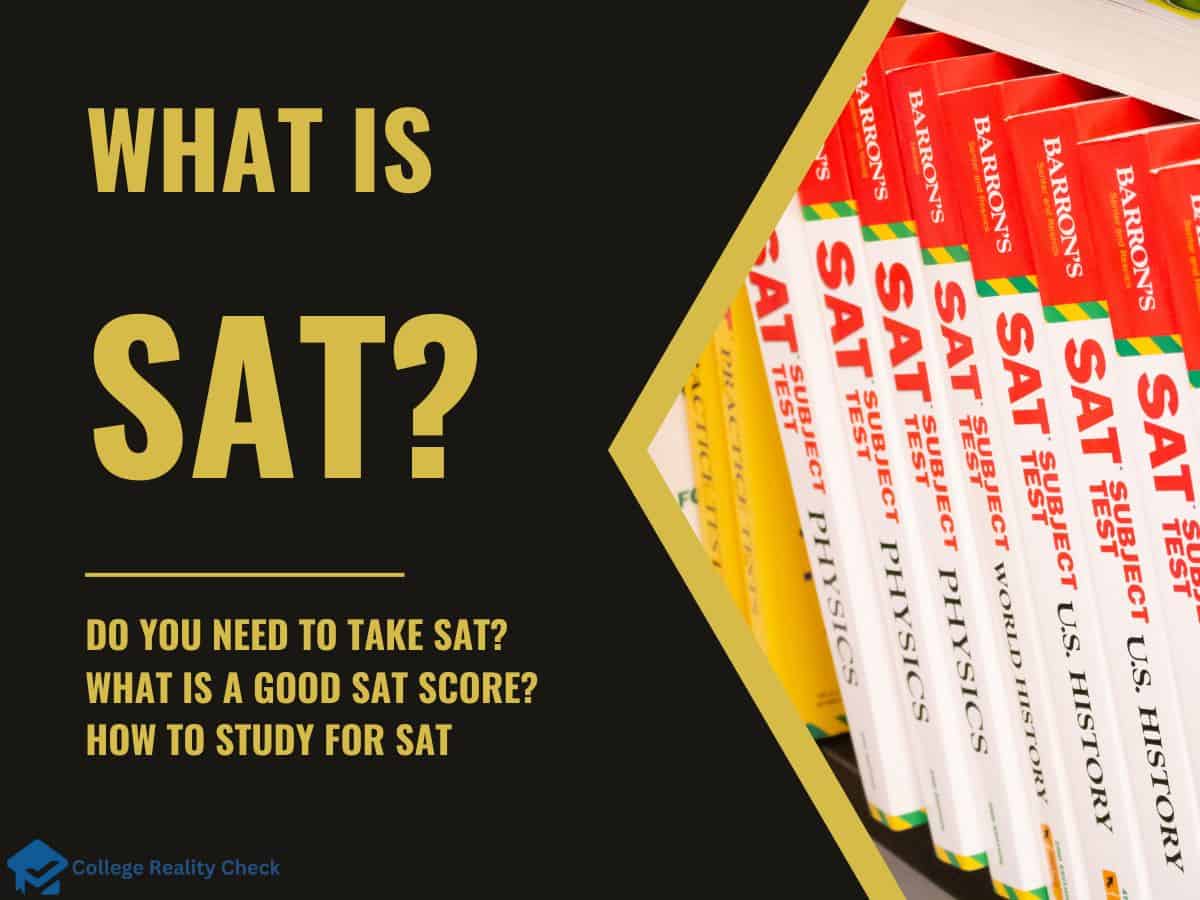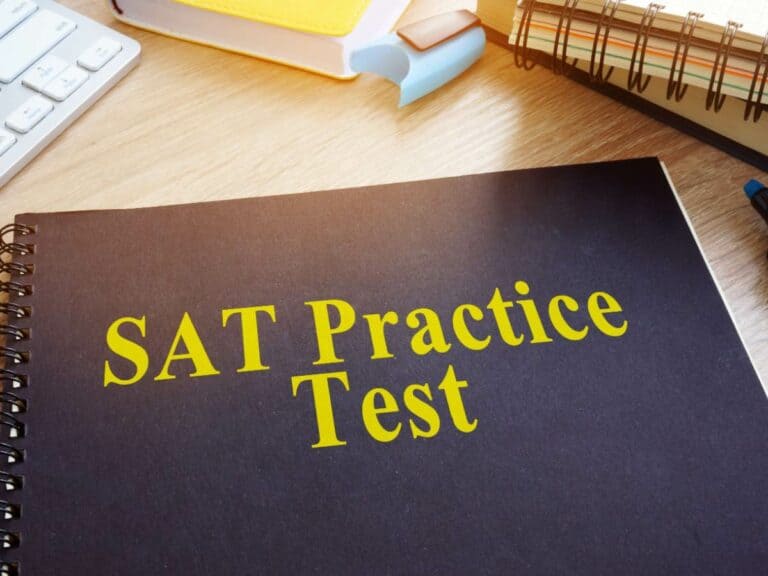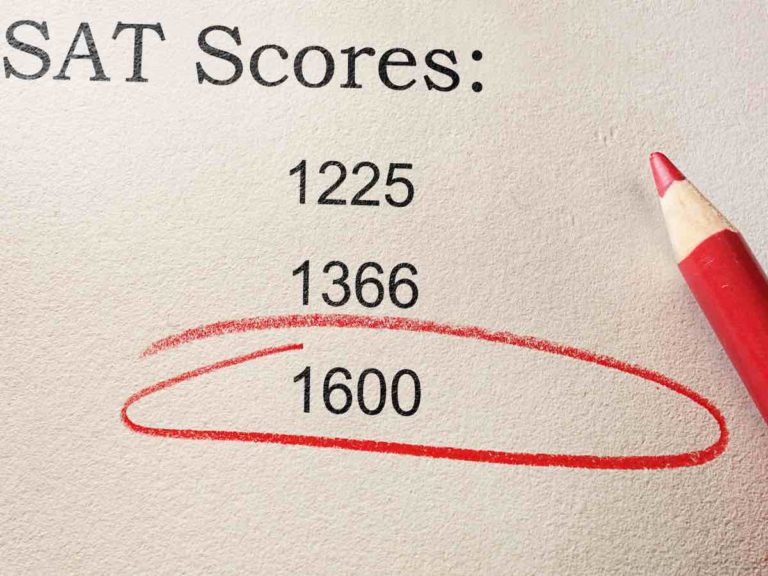What is the SAT? Ultimate Guide for Top Students
The SAT used to stand for Scholastic Aptitude Test and later on Scholastic Aptitude Test. These days, however, there is no particular SAT test meaning — SAT exams are simply called as such because the College Board wanted to get rid of “aptitude,” for it gave the idea that some individuals were born to attend college while some weren’t.
A standardized test, the SAT, is used by many colleges and universities as a part of the admissions process. It is a multiple-choice, paper and pencil examination that will soon go digital. Administered by the College Board, the SAT is employed not only for assessing the college readiness of applicants but also for determining scholarship eligibility at times.
Below, we will talk about some of the most important things you need to know about the SAT.
Is the SAT Important for College Admissions?
The SAT is an important exam for students to take if they are planning on applying to test-required colleges as well as certain scholarship programs. However, it’s completely up to college-bound individuals to take any of the college admission tests such as the SAT if the colleges they plan on applying to are test-required.
Read Also: 13 College Entrance Exams
Do You Have to Take the SAT?
The SAT may or may not be taken by college-bound students who are planning on applying to test-optional postsecondary institutions. It was back in 1969 when the test-optional movement came into being, and Bowdoin College was the very first college to implement a test-optional admissions policy. Many small liberal arts schools followed suit.
Simply put, the test-optional movement argued that standardized tests do not increase the value of college applications. As of this writing, there are more than 1,840 test-optional and test-blind colleges in the US.
Can Colleges See How Many Times You Took the SAT?
According to the College Board itself, nothing automatically allows colleges and universities to see how many times applicants took the SAT. The only test scores they will see are the ones that students include in their applications. However, some institutions of higher education require applicants to submit all test scores from all test dates.
Some colleges require the submission of all SAT taken to have a much better idea of an applicant’s academic capabilities as well as to look for positive trends that can help increase admissions chances.
What is on the SAT?
In the past, the SAT consisted of Critical Reading, Writing & Essay and Math sections. The new SAT, however, combined the sections Critical Reading and Writing & Essay. According to the SAT website itself, the standardized test was redesigned to make it more straightforward as well as connected to classroom learning.
How Many Sections are on the SAT?
The SAT is made up of 2 main sections: Evidence-Based Reading and Writing (EBRW) section and Math section. The EBRW section has 2 parts: Reading and Writing & Language. On the other hand, the Math section has 2 sections: Calculator and No-Calculator sections. Each section of the SAT has a different number of questions.
There’s another section of the SAT, which is optional, and it’s the Essay section. It was in 2016 when the Essay section became optional. The Writing section of the ACT, meanwhile, has always been optional.
However, these days, the Essay section is no longer available.
How Many Questions is the SAT
The SAT has a total of 154 multiple-choice questions. The SAT section with the most number of questions is the Math section, given that the said section is made up of 2 sections. The SAT section with the least number of questions, on the other hand, is the Writing & Language, which is a part of the EBRW section.
Here’s a table that shows the number of questions each section of the SAT has:
| Section | Number of Questions |
| Reading | 52 |
| Writing & Language | 44 |
| Math | 58 (38 for the Calculator section and 20 for the No-Calculator section) |
What Kind of Math is on the SAT?
According to the College Board itself, there are 4 types of math in the Math section of the SAT. The non-profit organization refers to them as the following: Heart of Algebra, Problem Solving and Data Analysis, Passport to Advanced Math, and Additional Topics in Math. Each of them covers different math topics.
Let’s take a look at what each kind of math in the SAT’s Math section is all about:
- Heart of Algebra – mastery of linear equations and systems
- Problem Solving and Data Analysis – analyzing problems and drawing information
- Passport to Advanced Math – manipulation of complex mathematical questions
- Additional Topics in Math – geometry and trigonometry
Is There Science on the SAT?
Unlike the ACT, there is no Science section on the SAT. However, the Math section of the SAT is designed in a way that it demonstrates the critical and analytical thinking skills of test-takers, which are essential for attaining success in the STEM field. As a result of this, some students who excel in science prefer the ACT over the SAT.
Although the ACT has a Science section, it’s not technically designed to measure a student’s knowledge about science but assess his or her ability to read charts and graphs and draw conclusions from what they have read.
Is There Writing on the SAT?
The SAT has a Writing section, which is a part of the bigger EBWR section. However, despite its name, the Writing section is not similar to the optional Essay section of the SAT or the optional Writing section of the ACT. Instead, it’s all about evaluating the ability of test-takers to fix weaknesses and mistakes in the given passages.
Grammar, vocabulary in context and editing skills — these are what the Writing & Language section of the SAT is all about, and each of the questions to answer are multiple-choice questions.
What is the SAT Reasoning Test?
The SAT Reasoning Test was a former name of the SAT, which has undergone several name changes throughout its existence. Initially, the SAT was known as the Scholastic Aptitude Test.
After some time, it was referred to as the Scholastic Assessment Test. It then became known as SAT I: Reasoning Test, after which it was referred to as the SAT Reasoning Test.
Currently, the SAT does not stand for anything — it’s just the name of the standardized test.
How Does the SAT Work?
The SAT is a timed examination. The entire standardized test is comprised of 3 separately timed sections — 2 for EBRW section and 1 for Math section. The questions are multiple-choice kinds, and they are designed to evaluate the literacy, numeracy and writing skills of the test-taker, all of which are vital for college-level coursework.
What Does the SAT Measure?
The SAT is designed to measure the college readiness of students by means of their literacy, numeracy and writing skills, all of which are vital for attaining academic success in their postsecondary education careers. The SAT provides admissions officers with a common data point that they can use to measure applicants against one another.
However, it’s important to note that colleges and universities rarely make admissions decisions based solely on college readiness through SAT scores. Often, the SAT is just one of the various admissions factors taken into account.
Is the SAT Multiple Choice
The SAT consists of multiple-choice questions. As a matter of fact, the EBRW section, which is made up of Reading and Writing & Language sections, has questions that provide test-takers with multiple answer options. Because there is no penalty for wrong answers, students can make a guess each time they don’t know the answer.
In the past, every wrong answer had a 1.25 point deduction. However, since the new SAT came into being in 2016, no point deductions are made for each incorrect answer.
Is the SAT a Standardized Test?
The SAT is a standardized test in that it requires all test-takers to answer the very same questions. Similarly, all answers given by test-takers are graded in the same predetermined way set by the College Board.
Still, colleges and universities that consider the SAT in the admissions process may use SAT scores differently when making admissions decisions.
Both the SAT and ACT are standardized test scores. Similarly, college admissions officers see them equally — they have no preference between these exams during the review process.
When Do You Take the SAT Test?
The SAT is administered 7 times per year. In terms of at what grade level the SAT is taken, high school students may take the standardized test at any given time starting their freshman year. However, most students take the SAT for the very first time in the spring of their junior year and retake it, if necessary, in the fall of their senior year.
Here are the months when the SAT is given in the US for American high school students:
- March
- May
- June
- August
- October
- November
- December
How to Guess on the SAT
To guess on the SAT, test-takers should first eliminate at least 1 answer choice, which gives them a 33% chance of getting the right answer. Meanwhile, eliminating 2 answer choices allows them to enjoy a 50% chance of giving the correct answer. It’s generally a good idea to guess the answer if the question is too confusing or time-consuming.
Just like what was mentioned earlier, there is no penalty for every wrong answer on the SAT, which means that guessing is welcome. As a matter of fact, students should answer all questions even if they need to guess.
How Long is the SAT?
It takes 3 hours to complete the SAT. Because there is a 10-minute break after the first section, which is the Reading section that’s 65 minutes long, and another 5-minute break after the Math – No-Calculator section, which is the third section and takes 25 minutes to complete, the entire SAT is 3 hours and 15 minutes long.
The following table shows the length of each of the sections of the SAT:
| Section | Time |
| Reading | 65 minutes |
| Writing & Language | 35 minutes |
| Math | 80 minutes (55 minutes for the Calculator section and 25 minutes for the No-Calculator section) |
How Does SAT Scoring Work?
The SAT composite score can range anywhere from as low as 400 to as high as 1600. Each of the SAT’s main sections, EBRW section and Math section, is scored between 200 and 800, which is the scaled score. The scaled score, which is based on whether the SAT is slightly easier or slightly harder, is based on the raw score, which is the number of correct answers.
Each of the sections of the EBRW section contributes equally to the said section in the scoring process. On the other hand, the Math section is made up solely of the score for the Math exam.
What is a Good SAT Score?
Generally speaking, an SAT composite score that’s above the median or 50th percentile is considered decent because it means that the test-taker performed better than the majority of those who took the SAT. However, in a stricter sense, a good SAT score is something that can help the student get admitted to the college of his or her choosing.
Just about any score that’s higher than the average of all individuals who sat for the SAT on the same test date is considered above average and perfectly acceptable for many test-required or test-optional institutions of higher education.
Facts About the SAT
In this part of the post, we will discuss a couple of important facts about the SAT, including how it came into being and who came up with the standardized test that the College Board administers.
History of the SAT
During World War I, recruits of the US Army were tested for their intelligence. The examination was referred to as the Army Alpha, which was the very first mass-administered IQ test.
After WWI, the Army Alpha was made harder and used as an admissions test for a few college-bound students in 1926. In 1933, it was used at Harvard for scholarship eligibility.
Before the war, the College Board, which was established in 1900, administered a number of exams. But because of WWI, all of them were abolished. The SAT then became the basic standardized college test.
Who Created the SAT?
Carl Brigham, who was a Princeton University professor of psychology and a pioneer in psychometrics, is considered the father of the SAT. He adapted the Army Alpha, which was an intelligence test that was administered to US Army recruits, mainly by making it more difficult so that it could be used for college admissions purposes.
It was in 1926 when the SAT was first administered by the College Board, which is also the official SAT website. Since its creation, the SAT has undergone many changes. The biggest ever change happened in 2016, which gave rise to the new SAT.
What is the College Board?
The College Board is an American non-profit organization that was created in 1900 as the College Entrance Examination Board (CEEB) to make higher education more accessible. It’s a membership institution that now consists of more than 6,000 colleges and universities.
The College Board also conducts research and advocacy to serve students, teachers and schools.
According to the College Board itself, each year, it helps over 7 million students successfully transition through higher education by means of college readiness and college success programs and services.
How Many People Take the SAT?
Around 1.7 million individuals take the SAT in 2022, with the vast majority of them being students in their junior and senior high school years. On the other hand, in the same year, the number of people who took the ACT was about 1.5 million.
At that time, 1050 was the average SAT score, which was the lowest since the standardized test changed its format in 2016.
Compared to the ACT, the SAT is more popular. Despite this, colleges and universities that are test-required as well as test-optional do not prefer one examination over the other.
What is the SAT Designed to Predict?
Being a standardized college entrance exam, the SAT is designed to predict college readiness, which is all about a student’s potential for success in pursuing an undergraduate degree. It does so by assessing the knowledge and skills of a college-bound individual in math and reading and writing, all of which are vital for college-level coursework.
Opinions about the effectiveness of the SAT in predicting college readiness are divided. For instance, research done on students without standardized test scores usually do well in college as their peers who submit standardized test scores.
Is the Fifth Section on the SAT Scored?
The fifth section of the SAT is also known as Section 5 or the SAT Experimental Section. Simply put, it’s a section of the SAT that is used for testing out questions for future SAT examinations. Other than not being scored and thus won’t affect a student’s actual SAT score, the fifth section of the SAT is also completely optional.
It takes 20 minutes for the fifth section of the SAT to be completed. The questions can be either math or English or both. The fifth section of the SAT allows the College Board to determine the relative difficulty of experimental questions.
Does the SAT Have an Essay?
The SAT used to have an Essay section. Since the standardized test came into being, the Essay section has always been required for test-takers to take. However, in 2016 when the SAT underwent a change in its format, the Essay section became optional.
Back in 2021, however, the College Board announced that it would stop offering the optional Essay section.
Registration fee for the SAT with the optional Essay section, when it was still being offered, amounted to $68. Meanwhile, without the optional Essay question, the SAT cost $52 only.
Does the SAT Provide Calculators?
The SAT does not provide calculators to test-takers. Instead, individuals must bring their calculators with them to their respective test centers on their respective test dates. It’s important to keep in mind that there are certain restrictions on what type of calculators can be used as well as when during the SAT that calculators can be used.
The Math section of the SAT is divided into Calculator section and No-Calculator section. It’s possible for test-takers to answer the Calculator section without using a calculator, although it will surely consume a lot of their time.
SAT is Changing – Paper Based vs. Digital
Eventually, the SAT will turn from the current paper and pencil format to the digital format.
Other than having an entirely new format, the digital SAT is shorter — it will take 2 hours and 24 minutes (with breaks) to complete, whereas the paper and pencil SAT takes 3 hours and 15 minutes (with breaks) to complete.
Instead of the usual 154 multiple-choice questions, the digital SAT will only have 98 multiple-choice questions. But just like its paper and pencil counterpart, the digital SAT will have a couple of sections: EBRW section and Math section. Test-takers will have 64 minutes to complete the EBRW section and 70 minutes to complete the Math section.
Despite being online, the digital SAT will still have to be taken by students at designated test centers.
They can, however, choose to bring their personal laptops with them to test centers, although some test centers or schools may require students to take the digital SAT on the computers they have on site.
When Does the SAT Go Digital?
The College Board will administer the digital SAT first to international students at international test centers in spring 2023. On the other hand, the digital SAT will be offered in the US for domestic students in spring 2024.
How to Study for the SAT
Experts recommend preparing for the SAT about 3 months before the test date. It’s a good idea for students who are planning to sit for the standardized examination to take practice tests as it can help them determine what they already know and, more importantly, their weak points, so that they can dedicate more of their time to getting familiar with them.
The College Board offers free test preps for students, which, of course, are some of the best.
Other than those from the administrator itself of the SAT, high school students may also choose to take advantage of test preps in the form of online courses and guidebooks available on the internet.
A way to gear up for the SAT, which, as mentioned earlier, is ideally taken for the very first time in the spring of junior year and retake it, if unhappy with one’s scores, in the fall of the senior year, is by taking the PSAT. Short for Preliminary Scholastic Aptitude Test, the PSAT serves as a preparation for the SAT.
While most high school teens take the PSAT in the 11th grade to also qualify for the National Merit Scholarship Program, the standardized test score may also be taken in the 9th and 10th grades.
SAT Practice Test
In this part of the post, I will give you a total of 10 sample SAT questions — 5 for English and 5 for math. I took the questions below from the SAT Practice Test #1 by the College Board itself.
The passage below will take you to the SAT sample questions for English:
The Consolations of Philosophy
Long viewed by many as the stereotypical useless major, philosophy is now being seen by many students and prospective employers as in fact a very useful and practical major, offering students a host of transferable skills with relevance to the modern workplace. (1) In broad terms, philosophy is the study of meaning and the values underlying thought and behavior. But (2) more pragmatically, the discipline encourages students to analyze complex material, question conventional beliefs and express thoughts in a concise manner.
Because philosophy (3) teaching students not what to think but how to think, the age-old discipline offers consistently useful tools for academic and professional achievement. (4) A 1994 survey concluded that only 18 percent of American colleges required at least one philosophy course. (5) Therefore, between 1992 and 1996, more than 400 independent philosophy departments were eliminated from institutions.
Questions:
Q 1.
Q 2.
Q 3.
Q 4. Which choice most effectively sets up the information that follows?
Q 5.
Answer key:
And now, let’s take a look at 5 sample test questions for the Math section of the SAT.
1. Kathy is a repair technician for a phone company. Each week, she receives a batch of phones that need repairs. The number of phones that she has left to fix at the end of each day can be estimated with the equation P d = 108 − 23, where P is the number of phones left and d is the number of days she has worked that week. What is the meaning of the value 108 in this equation?
2. On Saturday afternoon, Armand sent m text messages each hour for 5 hours, and Tyrone sent p text messages each hour for 4 hours. Which of the following represents the total number of messages sent by Armand and Tyrone on Saturday afternoon?
3. A pediatrician uses the model h a = 3 + 28.6 to estimate the height h of a boy, in inches, in terms of the boy’s age a, in years, between the ages of 2 and 5. Based on the model, what is the estimated increase, in inches, of a boy’s height each year?
4. In the equations below, b and c represent the price per pound, in dollars, of beef and chicken, respectively, x weeks after July 1 during last summer. What was the price per pound of beef when it was equal to the price per pound of chicken?
b = 2.35 + 0.25x
c = 1.75 + 0.40x
5. A line in the xy-plane passes through the origin and has a slope of 1/7. Which of the following points lies on the line?
Answer key:
The sample questions above are from the following sites:
www.serragotestprep.com
quizlet.com
Should I Take the SAT or the ACT?
Both SAT and ACT scores are used by many colleges and universities in the admissions process as a part of their holistic admission policy. Similarly, a lot of institutions also use them to determine scholarship eligibility.
Admissions officers do not prefer the SAT over the ACT and vice versa.
So, in other words, it’s completely up to you whether it’s the SAT or ACT you will take — your choice of standardized test should be based on which one you can take with more self-confidence as well as ease. Needless to say, it’s highly recommended that you choose the exam that you are more likely to ace.
Because of this, you should familiarize yourself with the content of the SAT and ACT as well as the required testing strategies by taking some practice tests of both and then registering for one that you would feel more comfortable sitting for.
Read Next: ACT Tests Guide
Disclaimer: The views and opinions expressed in this article are those of the authors and do not necessarily represent those of the College Reality Check.






